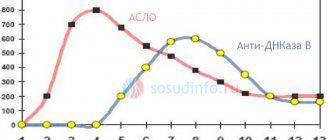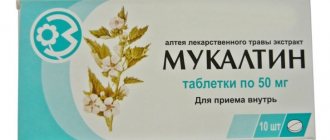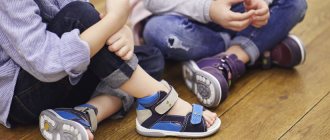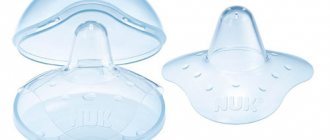Choosing equipment for a child is a particularly important matter. It is necessary to take into account the rapid growth of children, guided by considerations of comfort, safety, and visibility. Let's take a closer look at the process of choosing clothes for winter sports for a child.
By the way, a child can be put on skis and boards from 2.5-4 years old, and more adult equipment can be selected from 14-15, when the baby is not growing so quickly
If the son/daughter is seriously involved in sports, then the approach to equipment will be more strict; naturally, this is associated with large investments. Almost every season you will have to select the ideal pair for your height, which will allow you to improve on the slope.
Types of cross-country skiing
Cross-country skiing is divided into two categories: by skiing style and by level of training. Read about each of the existing types below.
By riding style
- For a classic move. The length of adult skis reaches 207 centimeters. They have a pointed and long toe. Riding classics requires the pad to touch the snow, so such skis should have medium softness.
- For skating. In short, the classics can be a maximum of 192 centimeters. They have a blunt toe and a gap of two to three millimeters, this distance allows the middle part not to touch the snow when performing a kick. Torsional and longitudinal rigidity is another distinctive feature of skate skis.
- Combined. Can be used for classic or skating. The length does not exceed two meters. However, the design is more like a classic ski.
- For extreme tourism. Designed for off-road driving. Where there is no track, there are no equipped lifts, etc. They are usually used by tourists who prefer to conquer unexplored areas. They have high rigidity and are carefully tested by the manufacturer for reliability.
By level of training
- Amateur or for beginners. Suitable for those who have just started getting acquainted with skiing or prefer quiet ski trips. They are aimed at the mass consumer and are inexpensive. Cheaper plastic is used for manufacturing. Amateur skis can be used in classic and skating skiing. They weigh up to 1.7 kilograms. Instead of lubricant, a notch is used on the block, the so-called no wax technology.
- Average level. Suitable for those who already have basic skills and have worked them well. The weight of cross-country skis is lighter than that of amateur skis and can reach 1.4 kilograms. They are stiffer compared to entry-level skis. For their manufacture, plastic and cores of the best quality are used. Most often, a lubricant is used rather than a no wax system.
- Expert. These skis are used either by athletes for training or by amateurs who have reached an advanced level. They are made from high quality materials. The weight is lower than that of entry-level and intermediate-level skis and reaches a maximum of 1.3 kilograms. They are quite tough. They never use the no wax system. In addition, there are no combined models; they are only available for classic or skating.
- Sports. This category of skis is used for competitions. The weight is the lowest of all the categories presented and does not exceed 1.1 kilograms. They have several options for rigidity and sliding surface. In addition, there are several variations in the distribution of mass along the length. This range of choices allows you to choose the ideal option in accordance with the skier’s build and depending on weather conditions.
Selection rules
To choose alpine skis, you should study the following parameters:
- Radius.
- Rigidity.
- Geometry.
- Width.
They are selected taking into account the weight and height, age and level of preparedness of the child.
Beginning
For children under 5 years old, it is customary to choose plastic models without rigid fastenings. They do not require the purchase of additional equipment, since the child can ride in simple warm felt boots or boots.
For fastening, it is better to use the “2 straps” method or special galoshes with the heel secured to the heel.
Choosing boots for beginner skiers is not advisable, since foot size changes quickly and they will have to be thrown away after the end of the season.
Entry-level skis can be shorter than a child’s height and have a wide base. In the early stages of learning, your baby does not need to develop speed or perform complex tricks. It is enough for a young athlete to learn how to glide and maintain balance.
The very first skis were 40 cm long and 8 cm wide. They were made of plastic and had rounded ends. After gaining minimal skills and experience, you can move on to models with a length equal to your height.
Parents often make a common mistake and buy skis “for growth.” As a result, the child spends more time mastering technology and is forced to manage inconvenient equipment.
Practicing
If you are choosing skis for a child 7 years old, 8 years old or 9-12 years old, it is better to give preference to a semi-professional sports model. This product is distinguished by a narrow base (width up to 5 cm) and increased length. It is calculated using the following formula – child’s height + 15 cm.
Traditional camber
The classic (weight) camber (Camber) is considered the most popular. Skis are characterized by the presence of an upward deflection in the central part of the structure. Under the influence of the skier's weight, he is pressed down, distributing the load over the entire surface.
Camber models are suitable for quality descents with a prepared surface. They can be used both on ice and snowy surfaces.
If there is loose snow, choosing Camber is not advisable. Also, the classic camber is not suitable for pristine skiing.
By height
To select skis according to your child’s height, you can use a special table.
| Height, cm | Recommended length, cm | Length of poles, cm | Age |
| 100 | 100 | 75 | 3 years |
| 110 | 110 | 80 | 4 years |
| 115 | 120 | 85 | 5 years |
| 120 | 130 | 90 | 6 years |
| 125 | 140 | 95 | 7 years |
| 130 | 150 | 100 | 8 years |
| 145 | 170 | 115 | 11 years |
The length of the product for young beginners should not exceed their height. As you gain skills, the difference can be increased. Experienced skiers buy models that are 20-25 cm longer than their height.
By brand and price
A wide range of skis from leading manufacturers from around the world are available for sale. They differ in technical characteristics and price.
If you are choosing a model for running, there is no point in stopping at the elite editions. However, if a child shows interest in professional mountain sports and wants to enroll in a section, he will have to buy professional equipment.
Popular brands include:
- Volkl.
- K2.
- ELAN.
- Nordica.
- Scott.
- Head.
- Fischer.
- Atomic.
Rocker camber on the nose
Buying skis with reverse camber is suitable for those cases where it is important to ensure effective entry and exit from turns. Such models are used on unprepared slopes, uneven surfaces and porous snow surfaces.
The Rocker deflection is determined according to the following principles: it is necessary to apply the products to each other with sliding surfaces and evaluate their longitudinal position. The upper part of the structure will diverge. In the area of fastenings this discrepancy will be maximum.
How to choose by height
Children from two to five years old are recommended to purchase classic skis that match the child’s height. At five years old, the length of this category of skis may not be much greater than the height of a young athlete. Gradually the difference increases by 15-20 centimeters towards the skis. By adolescence it becomes even larger and eventually reaches 20-25 centimeters.
The length of skating skis usually exceeds the height of an adult athlete by 10-15 centimeters. In children, this indicator is achieved as gradually as in classic skis.
The approximate ratio of height and length of classic skis is presented in the table:
| HEIGHT IN CENTIMETERS | SKI LENGTH IN CENTIMETERS |
| 100 | 100 |
| 110 | 110 |
| 120 | 130 |
| 130 | 150 |
| 140 | 165 |
| 150 | 175 |
Selection of children's shoes
A child should buy special ski boots when the child definitely has the desire to engage in this sport. If the young talent is less than 5-6 years old and does not take his studies seriously, then he can ride in regular winter warm shoes, making sure to wear two pairs of socks.
For skiing without special shoes, certain ski bindings are used.
You can choose children's ski boots according to the same principle as adults. All ski dimensions correspond to boot length in mm . To reduce the number of problems with children's fitting, since for very small children it is unclear whether a boot or a bike is pressing on them, since ski boots are very hard and are unusual for children to constrain their feet, so it is better to measure the baby’s foot in advance from the edge of the big toe to the heel and, based on this data, choose ski boot. If you are not prepared or there is no opportunity to measure the length of your foot, below is an example of a grid according to standard Russian sizes.
Sliding surface
The final result of the athlete will depend on how correctly the skis glide. In addition to rigidity parameters and selecting a model based on weight and height, you should pay attention to the sliding surface.
As we reported in the first section of the article, there are two main types of sliding surface:
- Skis with notches. They are not whimsical and do not require careful care. For example, they do not need to be lubricated. At the same time, they have a number of disadvantages. The most basic one is limited sliding speed. Also not suitable for riding on icy snow. Basically, the sliding surface of this type of ski is made of low molecular weight plastic, so they cannot be treated with ointments.
- Skis with longitudinal grooves. For the manufacture of more professional models of cross-country skis, polyethylene with a high molecular weight is used. During movement, such a surface heats up due to friction with snow crystals. As a result, a thin layer of water is formed, which helps slide. To ensure that sliding occurs well regardless of the weather, the structure of the sliding surface includes a groove system. For cold weather, the distance between them should be 0.5 millimeters or less. For warm winters and wet snow, a distance of 0.75 millimeters or more is suitable. It is important to wax and lubricate such skis during use, because the sliding surface can oxidize.
At what age should you buy skis?
When choosing children's skis, you need to make sure that the child stands confidently on his feet and knows how to maintain balance. Children who have not yet learned to walk normally will not be able to stay on slippery and narrow surfaces. As a result, they will be subject to falls and loss of concentration. Experts recommend choosing sports equipment after the child reaches 2.5-3 years of age. In this case, it is better to rent your first cross-country skis:
- Firstly, babies grow at a rapid pace, and within a year the product will be unusable.
- Secondly, the child may refuse such activity, and forcing him to ski is prohibited.
Children aged 3-4 years are not able to go on long walks, so if they get tired, it is important to stop the activity and rest.
Boots and bindings
Before choosing ski boots, you should decide on the type of fastening. Currently, there are three main types of cross-country ski bindings for which boots are produced:
- NN75. They are the most budget option for fastenings. This is probably the only advantage. Otherwise, they are considered an outdated option. They have poor foot support. The fact is that only the toe of the boot is attached using a metal bracket. Due to the fact that the heel is not secured, problems may arise during the descent. Can only be used for the classic move.
- SNS is a modern mount developed by Salomon. They are used by famous athletes, skiers and biathletes. A system of flexors and guides is used here. The soles of the SNS boots stabilize the foot and help control the skis. There are models of bindings with automatic fastening, they are suitable for beginner skiers. All types of SNS mounts have one longitudinal guide. SNS Profil classic - for a classic ride. SNS Profil skate and SNS Pilot - for skating.
- NNN. Produced by Roteffella. In order to further stabilize the sole of the boots, this fastening option uses 2 longitudinal guides. Just like in SNS, a flexor system is used and there are modifications for classic and skating strokes.
Bindings for children's skis
For the first steps under the age of 5 years, you can purchase skis with universal fastenings on straps. They are suitable for any casual shoes. Young children may quickly become bored with a ski trip and want to play in the snow or run around. All this can be done without changing your boots.
Children's skis with universal bindings
As soon as your child loves skiing, you can switch to special boots. Children's bindings and boots are selected in the same way as adults. There are 3 fastening systems: SNS, NNN (Turnamic, Prolink are suitable for it) and the old N75 system. Each one has a specific boot sole.
The N75 mounts are the oldest mounting system in existence and are therefore simple and cheap. The reliability of such fastenings is definitely enough for physical education classes and mastering the classical move.
Skis with N75 bindings
SNS and NNN systems are used in professional sports. NNNs (Prolink, Turnamic, Rottefella) are especially popular now. They are more expensive than the N75 system, more comfortable, and have a large selection of boots of different levels.
Children's kits with NNN mounts
Photo: iwa-prague.com
Sticks
You should not buy poles for growth. The ideal ski poles are those that are light in weight, have good rigidity and strength. However, they are expensive, so it is better to purchase models that are simpler, but appropriate for the height and age of the child. For the classic move, you should choose poles that rest against the armpits, and for the skating move, be slightly higher than the shoulder.
The table will help you understand what size of ski poles you should take for your child if he is doing the classics:
| HEIGHT (CM) | SIZE OF STICKS (CM) |
| 100 | 75 |
| 110 | 80 |
| 120 | 90 |
| 130 | 100 |
| 140 | 110 |
| 150 | 120 |
Selection of skis by their length
The most important indicator that you should pay attention to when choosing children's skis with a modern shape is their length.
It is imperative to take into account the child’s weight when choosing such skis.
If your child weighs more than 20 kg, then this will allow you to use children's alpine skis more effectively, since the ski will sag and touch the snow with its entire surface.
If the weight of the child does not bend the ski, then the contact with the surface will be poor, the nose of the ski will dig in, and this will have a bad effect on its handling.
Popular brands and prices
Australian Atomic is rightfully considered the best brand of cross-country skis for children. The Ski Tiger Junior model of classic skis is especially in demand. It is convenient for both training and competition. These skis use Nordicap technology, which gives even pressure distribution. Operation does not require much effort; these skis do not require lubrication. The average price is 3,000 rubles.
For skating, you can consider Fischer RCR Skate junior skis. They are designed for juniors. Suitable for active riding and training. They have good torsional rigidity and a modern sliding surface structure, which ensures excellent gliding, regardless of weather conditions. The average price of such skis on the market is 7,500 rubles
Selection by child's weight
As a result of various experiments, it was found that the length of such alpine skis should be selected based on the weight of the child, which turned out to be very important.
It was found that if your child weighs less than 20 kg, then children's alpine skis with a traditional shape, selected using the usual method, are more suitable for him. And it doesn’t matter how old your child is, 3 years or 10 years old.
If your child weighs from 20 to 32 kg, then alpine skis with a new shape of 90 cm in length will suit him.
If the child’s weight is 32–41 kg, then skis 100 cm long will be suitable.
But each manufacturer can change these criteria for its alpine ski models.
But the essence of this method is quite clear.
Children's alpine skiing for a child 4.5 years old.
Alpine skiing for children KOA JR.
Ski care
In order for cross-country skis to last as long as possible, they should be properly cared for: lubricated. To do this you will need a special lubricant or paraffin. In addition, you should take a lubricating iron, it has a thick sole and a shape designed specifically for skis. It is better not to use a household iron, especially one with a Teflon coating. This way you risk ruining your skis.
Skis must be placed on a flat surface or on a special profile machine.
The sequence of applying ointment or paraffin is as follows:
- First, rub the ends of the skis with lubricant,
- Then level with an iron heated to 100-150 degrees.
- Leave the skis to cool for 15 minutes.
- Use a plastic scraper to remove excess ointment.
- The scraper must be moved from the toe to the end.
- Also, as you move, treat the surface with a nylon brush.
- Walk along the thrust bearing (middle part) with sandpaper.
- Apply primer to the middle part and smooth it with an iron.
- Rub the ointment with a stopper.
- Apply a holding layer of ointment.
- Grind this layer.
- Remove excess with a scraper.











